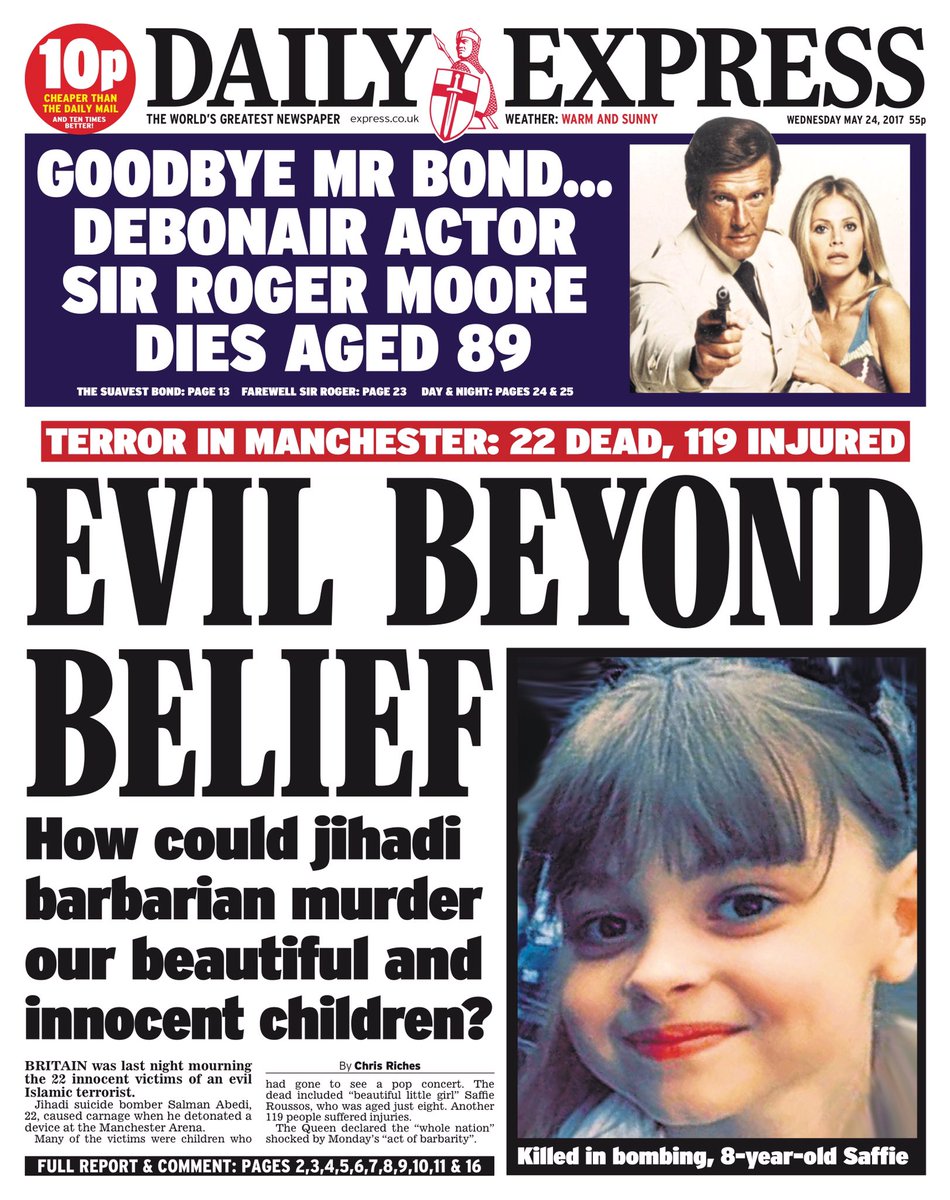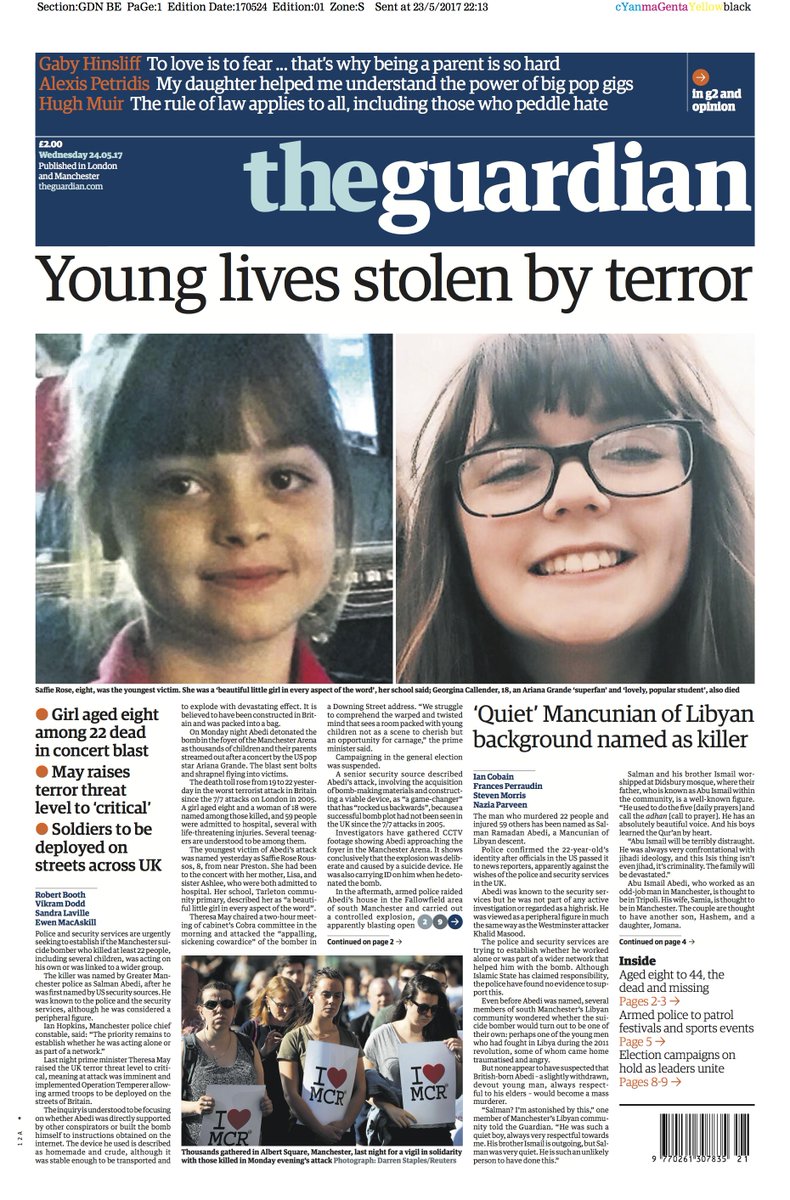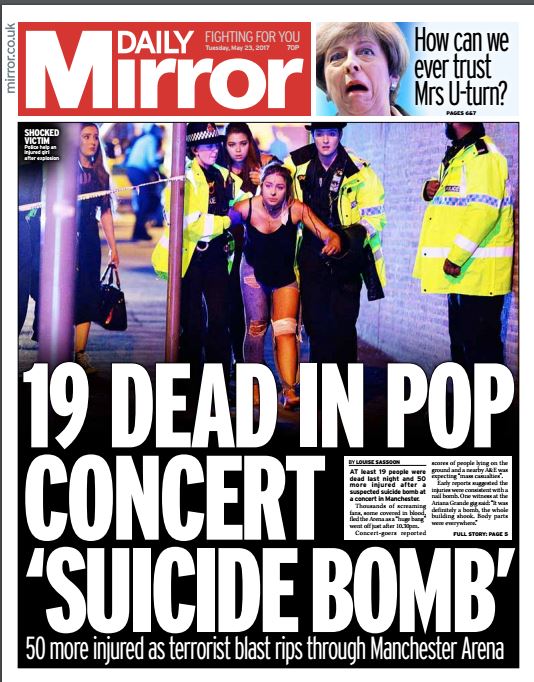Analysis of Print and Moving Image Adverts - Rhys Wallett
In this ad from "Salvations Army", we can decode how they have used certain media techniques to promote this charity which care for the poor. For starters, we can analyse how they have deeded to use the colour rule of three with black, red and white which have pragmatics of nuance, simplicity and tradition. Therefore, this allows a juxtaposition from tradition and abstractness to be shown in the advert as the abstract can be argued by how Salvation Army have gone for the unusual decision to make the CVI a small collection kettle which is insignificant enough to allow lots of white space to be shown in the ad, connoting class.
Class can also be shown with the decision to make the main headline which says "When you put money in our kettle, expect change." be written in serif font, which has connotations of class and sophistication. Yet this decision to make the advert sophisticated is interesting as a typical charity do not care about formality or manner, especially Salvation Army who care for the poor and homeless, thus the class act is intentional to tell their target audience charity is not the grunge, displeasing stereotype we commonly associate with it, and how charity deserves to be respected and listened to.
Class can also be shown with the decision to make the main headline which says "When you put money in our kettle, expect change." be written in serif font, which has connotations of class and sophistication. Yet this decision to make the advert sophisticated is interesting as a typical charity do not care about formality or manner, especially Salvation Army who care for the poor and homeless, thus the class act is intentional to tell their target audience charity is not the grunge, displeasing stereotype we commonly associate with it, and how charity deserves to be respected and listened to.
Furthermore, the choice to use a quirky yet powerful pun in the heading (with the pun 'change' being a link to change in the world and change from your pocket) is effective as it allows a 'riddle' of sorts to be embedded in the title, giving them the audience pleasure we receive when we decode a hidden message in an advert, which will then lead them to consider the seriousness of the situation and therefore they have used the puzzle of the pun to grab an audience's attention to donate towards their charity.
Simplicity is a huge part to this advert and its effectiveness. There appears to be no demonstrative action, nor intertextuality, or even applying to fear or desire many advertisers do. Just a red kettle with a powerful heading and some disclaimers at the bottom. The simplicity is effective as it ensures that an audience does not tire of, or get confused by an advert that would be more complex, and is able to use the white space to grab an audience's attention as it is an easy peruse, yet still allowing iconic representation of the charity to be effectively portrayed with their USP being a red kettle as the CVI.
Plus, they have also broken the rules of the 'soft sell/hard sell' paradigm in this advert as stereotypically, charity adverts use hard sells and leech of the audience's feelings of melancholy, empathy and woe to push them to donate towards their cause, however in this advert, hard sell does not prove to be used as there is nothing an audience would feel especially glum about, nor it is a soft sell as it also prevents feelings of pride and self confidence to be inherited for the audience, it fits into neither category. I feel this is effective as it allows cold facts to be the focus and dismisses the emotional response they egg from the audience, allowing a straight up and therefore effective advert to be produced and distributed.
In this Boohoo TV advert however, from their advertising campaign "WeAreUs", we can infer different advertising techniques used to effectively sell their product and see how it primarily differs from the advertising techniques used in the Salvation Army's print ad.
Firstly, demonstrative action is shown in this advert in the close up tracking shot of the women walking in her wedges from Boohoo. This is effective as it allows there products to be shown in use, thus highlighting what you would look like in them, which would give an audience the knowledge and security that there products are usable and pretty when worn, and therefore will provide a target audience with insurance when purchasing their products.
Plus, we can also use visual codes such as the background in the advert to infer effective sales techniques, especially in the first half of the advert which the background proves to be the ideally blue, sunny and cloudless weather, which is considered the most desirable weather by the majority of the audience which creates a subtle hyperbole which states that if you wear Boohoo, you will be surrounded by sun and joy and be as happy as the model's in the advert. Plus, it also taps into the 'fear and desire' rule used commonly in advertising as it uses the 'desire' straight men and homosexual women will feel when seeing these models, especially the mid shot of the brunette model which the mise en scene shows her exiting a swimming pool in a bikini and smiling broadly. This sexual desire allows Laura Mulvey's male gaze theory to be shown in the advertisement and will attract male customers for Boohoo Men and the target audience of females as they 'desire' to be like these happy, beautiful models.
Plus, they also prove to use the 'soft sell' technique so commonly found in fashion ads as the decision to make all the models happy, wealthy and successful tells us they aim to make the audience feel somewhat bad about themselves as they are not these icons to aspire to, therefore if you purchase Boohoo's products, you will magically be as successful as these women and have their lifestyle, as they are also advertising the 'glamour' lifestyle in the advert. Yet on another note, their decision for iconic representation is rather interesting as while their particular products are shown constantly throughout the advert, their branding is not visible till the very end which allows a target audience to get excited about the products shown and finally given the brand from which they can purchase these products, creating a pique level of intrigue before flashing the brand image.



